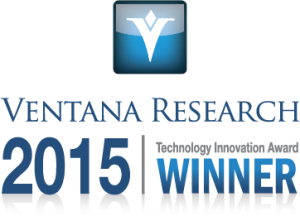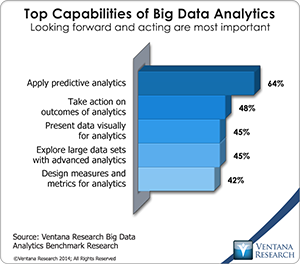Splunk’s annual gathering, this year called .conf 2015, in late September hosted almost 4,000 Splunk customers, partners and employees. It is one of the fastest-growing user conferences in the technology industry. The area dedicated to Splunk partners has grown from a handful of booths a few years ago to a vast showroom floor many times larger.
Splunk’s annual gathering, this year called .conf 2015, in late September hosted almost 4,000 Splunk customers, partners and employees. It is one of the fastest-growing user conferences in the technology industry. The area dedicated to Splunk partners has grown from a handful of booths a few years ago to a vast showroom floor many times larger. While the conference’s main announcement was the release of Splunk Enterprise 6.3, its flagship platform, the progress the company is making in the related areas of machine learning and the Internet of Things (IoT) most caught my attention.
Splunk’s strength is its ability to index, normalize, correlate and query data throughout the technology stack, including applications, servers, networks and sensors. It uses distributed search that enables correlation and analysis of events across local- and wide-area networks without moving vast amounts of data. Its architectural approach unifies cloud and on-premises implementations and provides extensibility for developers building applications. Originally, Splunk provided an innovative way to troubleshoot complex technology issues, but over time new uses for Splunk-based data have emerged, including digital marketing analytics, cyber security, fraud prevention and connecting digital devices in the emerging Internet of Things. Ventana Research has covered Splunk since its establishment in the market, most recently in this analysis of mine.
Splunk’s experience in dealing directly with distributed, time-series data and processes on a large scale puts it in position to address the Internet of Things from an industrial perspective. This sort of data is at the heart of large-scale industrial control systems, but it often comes in different formats and its implementation is based on different formats and protocols. For instance, sensor technology and control systems that were invented 10 to 20 years ago use very different technology than modern systems. Furthermore, as with computer technology, there are multiple layers in stack models that have to communicate. Splunk’s tools help engineers and systems analysts cross-reference these disparate systems in the same way that it queries computer system and network data, however, the systems can be vastly different. To address this challenge, Splunk turns to its partners and its extensible platform. For example, Kepware has developed plug-ins that use its more than 150 communication drivers so users can stream real-time industrial sensor and machine data directly into the Splunk platform. Currently, the primary value drivers for organizations in this field of the industrial IoT are operational efficiency, predictive maintenance and asset management. At the conference, Splunk showcased projects in these areas including one with Target that uses Splunk to improve operations in robotics and manufacturing.
For its part, Splunk is taking a multipronged approach by acquiring companies, investing in internal development and enabling its partner ecosystem to build new products. One key enabler of its approach to IoT is machine learning algorithms built on the Splunk platform. In machine learning a model can use new data to continuously learn and adapt its answers to queries. This differs from conventional predictive analytics, in which users build models and validate them based on a particular sample; the model does not adapt over time. With machine learning, for instance, if a piece of equipment or an automobile shows a certain optimal pattern of operation over time, an algorithm can identify that pattern and build a model for how that system should behave. When the equipment begins to act in a less optimal or anomalous way, the system can alert a human operator that there may be a problem, or in a machine-to-machine situation, it can invoke a process to solve the problem or recalibrate the machine.
Machine learning algorithms allow event processes to be audited, analyzed and acted upon in real time. They enable predictive capabilities for maintenance, transportation and logistics, and asset management and can also be applied in more people-oriented domains such as fraud prevention, security, business process improvement, and digital products. IoT potentially can have a major impact on business processes, but only if organizations can realign systems to discover-and-adapt rather than model-and-apply approaches. For instance, processes are often carried out in an uneven fashion different from the way the model was conceived and communicated through complex process documentation and systems. As more process flows are directly instrumented and more processes carried out by machines, the ability to model directly based on the discovery of those event flows and to adapt to them (through human learning or machine learning) becomes key to improving organizational processes. Such realignment of business processes, however, often involves broad organizational transformation.Our benchmark research on operational intelligence shows that challenges associated with people and processes, rather than information and technology, most often hold back organizational improvement.
Two product announcements made at the conference illuminate the direction Splunk is taking with IoT and machine learning. The first is User Behavior Analytics (UBA), based  on its acquisition of Caspida, which produces advanced algorithms that can detect anomalous behavior within a network. Such algorithms can model internal user behavior, and when behavior deviates from the specified norm, it can generate an alert that can be addressed through investigative processes usingSplunk Enterprise Security 4.0. Together, Splunk Enterprise Security 4.0 and UBA won the 2015 Ventana Research CIO Innovation Award.The acquisition of Caspida shows that Splunk is not afraid to acquire companies in niche areas where they can exploit their platform to deliver organizational value. I expect that we will see more such acquisitions of companies with high value ML algorithms as Splunk carves out specific positions in the emergent markets.
on its acquisition of Caspida, which produces advanced algorithms that can detect anomalous behavior within a network. Such algorithms can model internal user behavior, and when behavior deviates from the specified norm, it can generate an alert that can be addressed through investigative processes usingSplunk Enterprise Security 4.0. Together, Splunk Enterprise Security 4.0 and UBA won the 2015 Ventana Research CIO Innovation Award.The acquisition of Caspida shows that Splunk is not afraid to acquire companies in niche areas where they can exploit their platform to deliver organizational value. I expect that we will see more such acquisitions of companies with high value ML algorithms as Splunk carves out specific positions in the emergent markets.
The other product announced is IT Service Intelligence (ITSI), which highlights machine learning algorithms alongside of Splunk’s core capabilities. The IT Service Intelligence App is an application in which end users deploy machine learning to see patterns in various IT service scenarios. ITSI can inform and enable multiple business uses such as predictive maintenance, churn analysis, service level agreements and chargebacks. Similar to UBA, it uses anomaly detection to point out issues and enables managers to view highly distributed processes such as claims process data in insurance companies. At this point, however, use of ITSI (like other areas of IoT) may encounter cultural and political issues as organizations deal with changes in the roles of IT and operations management. Splunk’s direction with ITSI shows that the company is staying close to its IT operations knitting as it builds out application software, but such development also puts Splunk into new competitive scenarios where legacy technology and processes may still be considered good enough.
We note that ITSI is built using Splunk’s Machine Learning Toolkit and showcase, which currently is in preview mode. The  platform is an important development for the company and fills one of the gaps that I pointed out in its portfolio last year. Addressing this gap enables Splunk and its partners to create services that apply advanced analytics to big data that almost half (45%) of organizations find important. The use of predictive and advanced analytics on big data I consider a killer application for big data; our benchmark research on big data analytics backs this claim: Predictive analytics is the type of analytics most (64%) organizations wish to pursue on big data.
platform is an important development for the company and fills one of the gaps that I pointed out in its portfolio last year. Addressing this gap enables Splunk and its partners to create services that apply advanced analytics to big data that almost half (45%) of organizations find important. The use of predictive and advanced analytics on big data I consider a killer application for big data; our benchmark research on big data analytics backs this claim: Predictive analytics is the type of analytics most (64%) organizations wish to pursue on big data.
Organizations currently looking at IoT use cases should consider Splunk’s strategy and tools in the context of specific problems they need to address. Machine learning algorithms built for particular industries are key so it is important to understand if the problem can be addressed using prebuilt applications provided by Splunk or one of its partners, or if the organization will need to build its own algorithms using the Splunk machine learning platform or alternatives. Evaluate both the platform capabilities and the instrumentation, the type of protocols and formats involved and how that data will be consumed into the system and related in a uniform manner. Most of all, be sure the skills and processes in the organization align with the technology from an end user and business perspective.





